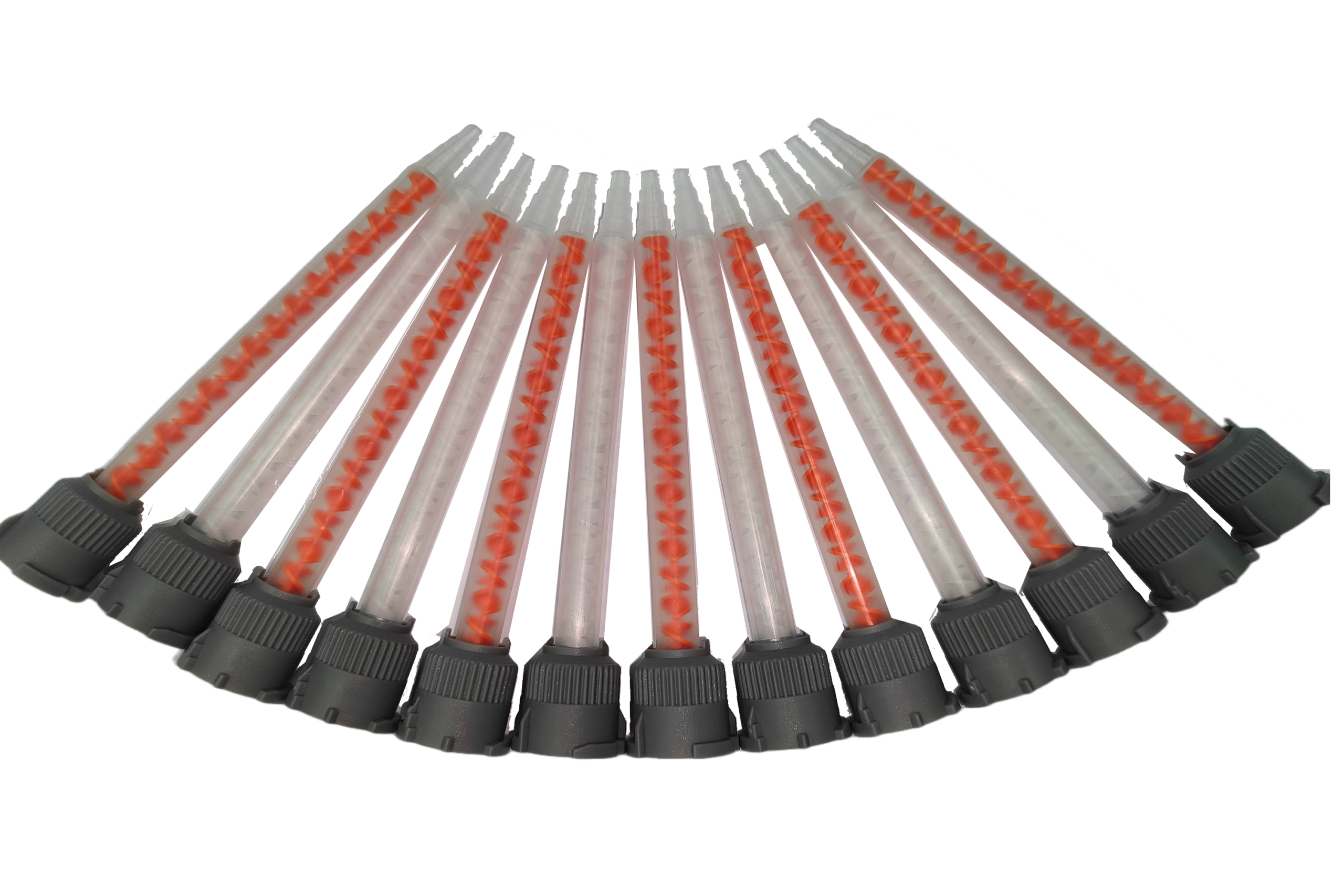Adhesive mixing tubes, also known as static mixer nozzles or epoxy mixing nozzles, are specially designed components used for dispensing two-component adhesives, sealants, or resins. These tubes feature a unique internal structure with multiple chambers or channels that promote thorough mixing of adhesive components as they flow through. By eliminating the need for manual mixing, adhesive mixing tubes ensure a consistent and homogeneous blend, enhancing adhesive performance and bond strength.
Advantages of Adhesive Mixing Tubes

Adhesive mixing tubes offer several key advantages over traditional adhesive application methods. Firstly, they provide precise and controlled dispensing, enabling accurate placement of adhesive in target areas. This results in reduced material waste and increased cost-efficiency. Moreover, adhesive mixing tubes eliminate the need for additional mixing equipment, streamlining the adhesive application process and saving valuable time. Consistent and reliable mixing within the tubes ensures the correct ratio of adhesive components, leading to improved product quality and minimized risk of adhesive failures. Furthermore, these tubes are disposable, simplifying cleaning and maintenance procedures.
Applications of Adhesive Mixing Tubes
-
Automotive Industry:
Adhesive mixing tubes find widespread use in the automotive sector for applications such as panel assembly, structural bonding, and trim attachment. These tubes ensure strong and durable bonds that withstand rigorous conditions.
-
Construction and Engineering:
From concrete repairs to waterproofing applications, adhesive mixing tubes play a vital role in construction and engineering projects. They enable precise dispensing and bonding, contributing to the integrity and longevity of structures.
-
Electronics Manufacturing:
Adhesive mixing tubes facilitate accurate and controlled adhesive application in electronics manufacturing. They are used for bonding circuit boards, potting components, and encapsulating sensitive electronic parts.
-
Medical Device Assembly:
Adhesive mixing tubes are crucial in the assembly of medical devices, ensuring reliable and sterile bonding solutions that meet strict regulatory requirements. They provide precise application and enhance product safety.
-
DIY and Home Improvement:
Adhesive mixing tubes empower DIY enthusiasts to undertake various projects with professional-level results. From repairing household items to installing fixtures, these tubes offer convenience and accuracy.
Choosing the Right Adhesive Mixing Tube
-
Size and Configuration:
Selecting the appropriate size and configuration of the mixing tube is essential to ensure proper adhesive dispensing. Consider factors such as the desired flow rate, available space, and compatibility with your adhesive dispensing equipment.
-
Material Compatibility:
Different adhesive formulations may require specific mixing tube materials to avoid adverse reactions. Ensure that the tube material is compatible with your adhesive to maintain optimal performance and avoid issues like clogging or blockages.
-
Mixing Ratio and Dispensing Rate:
Consider the required mixing ratio and desired dispensing rate when choosing an adhesive mixing tube. Ensure that the tube’s internal design matches the desired mixing ratio and that the dispensing rate aligns with the application requirements.
Tips for Using Adhesive Mixing Tubes
-
Proper Storage and Handling:
Store adhesive mixing tubes in a cool and dry environment to maintain their integrity. Avoid subjecting them to extreme temperatures or prolonged exposure to sunlight. Handle the tubes carefully to prevent damage to the internal structure.
-
Correct Installation and Attachment:
Ensure the mixing tube is properly attached to the adhesive dispensing equipment. Follow manufacturer instructions for installation and secure the tube tightly to prevent leakage or misalignment during application.
-
Cleaning and Maintenance:
After each use, purge the mixing tube with a compatible solvent to prevent the adhesive from hardening and causing blockages. Regularly inspect and clean the dispensing equipment to maintain optimal functionality.
Troubleshooting Common Issues
-
Clogging or Blockages:
If the adhesive mixing tube becomes clogged, discontinue use and clean the tube thoroughly. Use a compatible solvent or follow manufacturer guidelines for clearing blockages.
-
Uneven Mixing and Dispensing:
Ensure that the adhesive components are properly mixed and flowing through all channels of the mixing tube. Adjust the flow rate or consult the manufacturer if uneven dispensing persists.
-
Air Entanglement:
To prevent air entrapment, ensure the mixing tube is properly primed before dispensing adhesive. Follow the recommended priming procedure provided by the manufacturer.
Future Trends in Adhesive Mixing Tubes
The field of adhesive mixing tubes continues to evolve, driven by advancements in material science and manufacturing techniques. Future trends may include the development of eco-friendly and recyclable tube materials, enhanced precision in mixing and dispensing, and integration of smart technologies for real-time monitoring and control.
Conclusion
Adhesive mixing tubes offer precise and efficient solutions for bonding and sealing applications across various industries. Their advantages include accurate dispensing, reliable mixing, and reduced waste. By selecting the right tube, following proper usage guidelines, and troubleshooting common issues, users can optimize their adhesive applications. As technology advances, the future of adhesive mixing tubes holds exciting possibilities, ensuring continued advancements in precision and performance.
